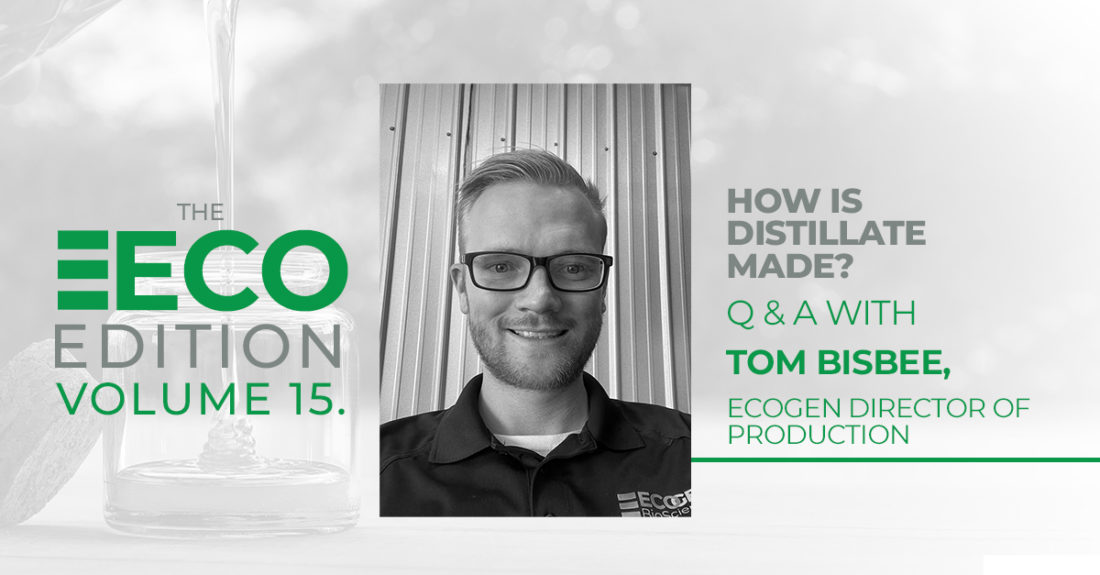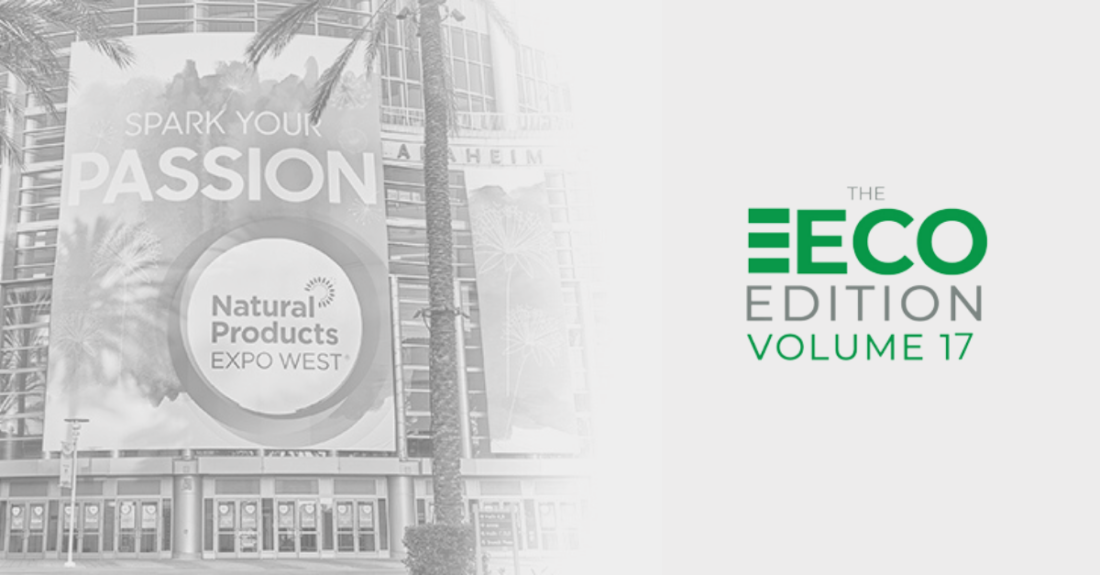
EcoEdition Volume 15: HOW IS DISTILLATE MADE?
A Q&A WITH TOM BISBEE, ECOGEN DIRECTOR OF PRODUCTION
When it comes to the production of distillate, one might be surprised to learn just how much goes into the making of a single batch. The science, knowledge acquired from bouts of trial and error, and especially the passion for the hemp plant are all that make EcoGen’s distillate out to be the best in the business.
But how exactly are our Signature and Standard distillates produced? We sat down with EcoGen’s Director of Production, Tom Bisbee, to find out.
First thing’s first – tell us a little bit about yourself and your role at EcoGen
As the Director of Production at EcoGen, my role is to oversee all of the various aspects of the production process, see what is working, find out what isn’t, and implement the best practices for our team that create the best outcomes for our customers.
My education is in applied math and chemical physics so this knowledge combined with my hands-on experience has allowed me to really help the production facility grow.
What aspects of the production process do you monitor?
At the Delta, Colorado Campus where I am located, we monitor the full production line. This includes extraction, distillation, crystallization, formulations, product remediation, and solvent recovery. We also work hand-in-hand with the facility operations team and maintenance team to ensure everything is running smoothly and passes quality control.
Distillate is one of the main production items for EcoGen – What is the process for how this is made?
- OBTAIN HEMP: First things first, we need to get the hemp biomass from trusted cultivators.
- ETHANOL EXTRACTION: The hemp then goes through an extraction process where the terpenes, cannabinoids, and other phytochemicals are extracted from the plant biomass. We perform our extraction by soaking the hemp biomass in ethyl alcohol (ethanol) at low temperatures around -40⁰C. The cold temperatures allow us to target the cannabinoids in the biomass while leaving many other unwanted compounds behind like waxes and sugars. The liquid solution collected from this process, known as miscella, is filtered through a very fine filtration media to remove solids and residual biomass particulates.
- SOLVENT RECOVERY: After the extraction miscella has been filtered, we need to remove the ethanol in order to leave behind a safe-to-consume and a consistent product that can be purified using our defined production process. To do this, we pump the product into industrial-scale heat exchangers that first heat and evaporate the ethanol to separate it from the crude extract. The ethanol vapor is then redirected to a separate heat exchanger that is kept at a low temperature that condenses it back into a liquid for reuse in the extraction process. By closely monitoring the parameters of this process, we are able to lower our carbon footprint by significantly limiting the amount of vapor that escapes into the atmosphere.
- DECARBOXYLATION: This is the vital process of converting an acidic compound (CBDA) to an active and neutral compound (CBD). This involves applying heat to the crude extract which, on a molecular scale, breaks a carbon-carbon bond and removes a carboxyl group from the cannabinoid’s molecular structure. This step is important because it helps the product interact within the body and bind to receptors in the Endocannabinoid System (ECS).
- DISTILLATION: After the crude extract is decarboxylated, it goes through a molecular distillation process where we begin to separate groups of chemical compounds with similar physical characteristics. At EcoGen, we primarily utilize Wiped Film Distillation to separate and purify our products.
Within this method, the crude extract is fed into a heated, stainless steel column under a deep vacuum. As the product moves through the equipment it is wiped into a very thin film on the inside wall of the column. This action increases the surface area of the product while maintaining a low volume which allows for high efficiencies regarding evaporation and gives us the ability to separate compounds at a high rate.
During the process, we collect different fractions as they come off the column sometimes known as heads, hearts, and tails. Using this vocabulary, you can think of terpenes as being the head and distillate as being the golden honey-colored heart of the extract. The tail fraction is usually a tarry black residue that contains many other phytochemicals found in the hemp plant. - CRYSTALLIZATION: After our primary distillate is obtained from the step above, we are then able to purify the CBD through a crystallization process. We utilize custom-built crystallization reactors that were designed and built in-house by our fabrication team and perform this process in a closed system. By carefully controlling the physical parameters of this process, we precipitate the CBD from the solution as a solid crystal with a very narrow particle size distribution. This technique prevents impurities from getting trapped within the crystal structure and consistently gives us a final CBD isolate powder that tests at 99%+ in purity.
- PROPRIETARY PROCESSING & FORMULATION: We utilize further processing and purification techniques to ensure that our Standard and Specialty distillates match defined potency specifications. Through these additional steps, we are able to carefully control the chemical profile of the distillates and verify that the CBD and other minor cannabinoids are present and available within our distillates. This is what gives our Signature and Standard distillates in full-spectrum and broad-spectrum their differences.
These last steps are just as important as those above, but are formulated specifically for EcoGen’s products and customer needs – so, unfortunately, we have to keep the inner workings of this process a secret.
What is your favorite step of the production process?
My favorite step in the process is crystallization. This is a process that I have studied in detail for the entirety of my 5-year career in the hemp industry, both at a lab-scale and industrial scale. By controlling various aspects of the process like temperature, agitation, pressure, and solution composition, we can grow crystals of different structures, sizes, and even co-crystallization impurity profiles. The formation of snowflakes is a great example of how small variances in physical conditions can create a wide array of beautiful crystal patterns and structures.
What is the most unexpected thing about the production process?
The end product and the entire process all depend on the original hemp biomass. The quality of the biomass leads to the initial quality of the crude extract. To ensure consistency, we have several processes in place to account for variability and different flows for each scenario.
What types of distillate do you produce?
EcoGen has six different types of distillates. We have Signature Distillate (full and broad-spectrum), which is our premium line of distillates. We also produce Standard Distillate (full and broad-spectrum) which is still an incredible product, but contains slightly less CBD. We also make UK-compliant distillate in Ultra and Standard formulations. The choice between the six depends on your location, desire for terpenes, and CBD amount.
The production of our distillates is intense, but with a skilled team on hand, EcoGen is able to produce incredible products for our customers. Are you interested in learning more about our distillate product offerings? Visit our website or contact one of our sales representatives to discuss which product is best for you.





